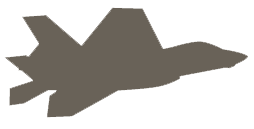Navy’s Unmanned Detect-and-Avoidance Tech Goes Operational
23 December 2024
CHERRY POINT, N.C. - Guardian, the Navy’s new UAS detect-and-avoidance system, will make unmanned training safer and more efficient at its first-ever operational squadron, Marine Unmanned Aerial Vehicle Training Squadron (VMUT) 2, after its August installation at Marine Corps Air Station Cherry Point, North Carolina.
Engineers from the Naval Air Warfare Center Aircraft Division delivered Guardian to the Marine Corps’ squadron dedicated to training the service’s MQ-9 Reaper operators.
“In a crewed aircraft, a pilot looks outside the cockpit to maintain an all-clear from others—unmanned operators can’t do this,” said Guardian Program Manager Kris Melton. “Guardian gives squadrons with unmanned systems an expanded reach into areas not previously flyable without the safety tech, and UAS operators the flight visibility they do not have inside control stations.”
Guardian tracks manned and unmanned systems across airspace within a 200 nautical mile radius. The system uses ground-based sensors to provide UAS operators in ground control stations visual cues for collision avoidance, suggesting maneuvers like turn, ascend or descend in instances where collisions are imminent—all on a computer screen.
NAWCAD engineers prototyped Guardian in response to safety requirements set by the Federal Aviation Administration (FAA) that limit unmanned systems from operating in airspaces alongside manned aircraft. The restrictions make flight operations increasingly difficult to execute, as unmanned aviation becomes a larger part of the Navy’s portfolio. Before Guardian, only a single unmanned vehicle could operate over NAWCAD’s airspace, the Atlantic Test Ranges, at any given time, which made flight operations a challenge to manage across the warfare center’s squadrons testing aircraft for the Navy and Marine Corps.
The Navy is considering Guardian for other operational squadrons, and NAWCAD is providing the technology to Edwards Air Force Base and the Naval Air Warfare Center Weapons Division for future unmanned test programs. NAWCAD is also developing a prototype to test on carriers to determine whether Guardian can increase safety for future manned/unmanned teaming in operational environments.
Guardian is the Navy’s only detect and avoidance system that meets the FAA’s performance standards for unmanned systems, and is currently under evaluation with the agency as an alternate compliance measure for its see-and-avoid mandate. Guardian earned Naval Air Systems Command certification in 2023.
Written by Naval Air Warfare Center Aircraft Division Visual Information. 